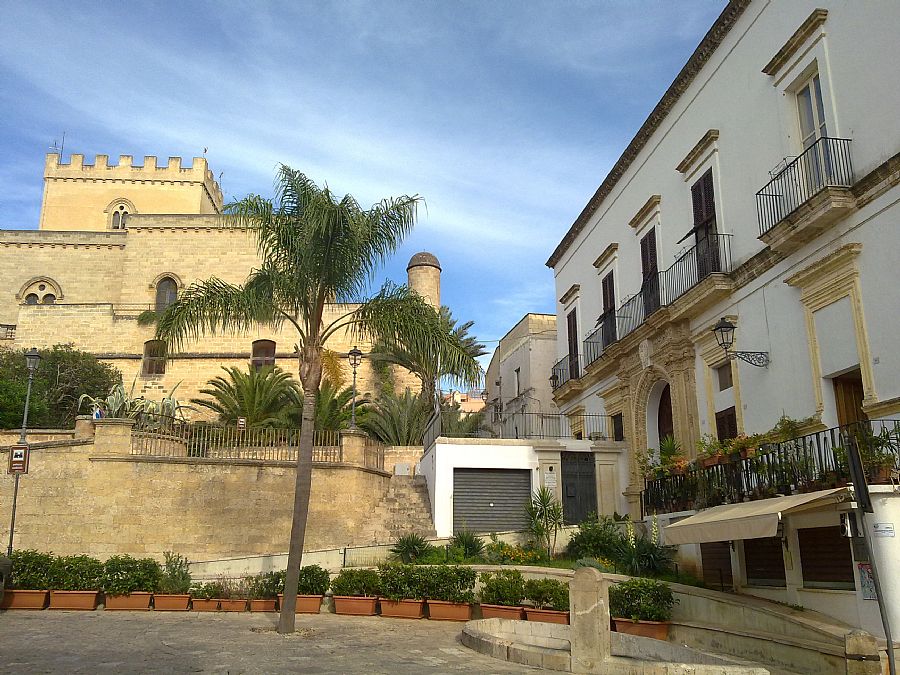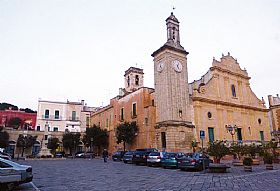Parabita

In the middle of the Salento in southern Puglia, Parabita is a lovely small town just 13 kilometers from the Ionian Sea but with its own charms. Its history goes back to prehistoric times; neolithic era huts were uncovered but archeologists say there was a human presence here even before that. After, the Messapic tribes settled here and built the first village, called Bavota, more than a thousand years before the birth of Christ. The Greeks arrived in 800 BC and enlarged the town. The Romans came next and with them came status, as Parabita gained importance as a place they minted coins. It was destroyed by the Saracens in 927, and rebuilt a bit inland from the original settlement.
The new city at the current site was constructed with a protective wall that held four city gates. It was held alternatively by the Spanish, the French and noble lords, and each left a mark on the architecture of the town. There is an imposing castle and several palazzi, along with churches and monasteries that all lend an air of elegance to the streets. The Angevin castle was built in the 14th century then expanded and redecorated in the 1500s by the Castriota family. It was maintained as the feudal seat, and sold in 1690 to the Ferrari family, who made it a duchy. It remained a noble palace until the end of feudalism in the 1800s. It is still a beautiful building.
The church of San Giovanni dates to the 12th century, though it has undergone changes and restructuring through the centuries. The crypt holds the remains of San Vincenzo Martire, a gift to the Ferrari family that was transferred to Parabita from the catacombs of Rome. The beautiful Basilicata Sanctuary of the Madonna della Coltura is a Gothic gem with a classic exterior and lofting cross-vaulted interior, that holds Byzantine frescoes. The icon of the Virgin with Child bears a Greek inscription and is much venerated. The interesting and unusual Church of the Crucifix (del Crocefisso) and adjacent Convento degli Alcantarini with its open arcade on the roof is worth a visit.
Outside town is the Grotta delle Veneri, a cave where two statuettes were found in 1965, of Venus (Venere) carved in horse bone. The pregnant female statues were ancient fertility symbols.
Around town you'll find a few museums to visit, including the Museo del Vino, located in a palmento (cave) that recounts the history and process of wine making in the Salento, along with an art museum and one dedicated to posters. There are religious and civil festivals almost every month. The tastiest is the Sagra della Puccia, dedicated to the bread called puccia and the sandwiches they make with it (in August). The hub of life is Piazza Umberto Primo, in the middle of the old town center. You'll find plenty of restaurants, cafes, shops and atmosphere. With the beaches just a few minutes away, and the sights of the Salento in reach, Parbita is a good home base for exploring.
Have you seen our self-catering apartments in Puglia?

 Amalfi Coast
Amalfi Coast Sorrento Coast
Sorrento Coast Tuscany
Tuscany Cilento National Park
Cilento National Park Lake Como
Lake Como Rome and Latium
Rome and Latium Umbria
Umbria Capri and Ischia
Capri and Ischia Venice
Venice Puglia (Apulia)
Puglia (Apulia) Liguria
Liguria Sicily
Sicily Lake Maggiore
Lake Maggiore Lombardy
Lombardy Sardinia
Sardinia Lake Garda
Lake Garda Abruzzo and Marche
Abruzzo and Marche Calabria
Calabria

